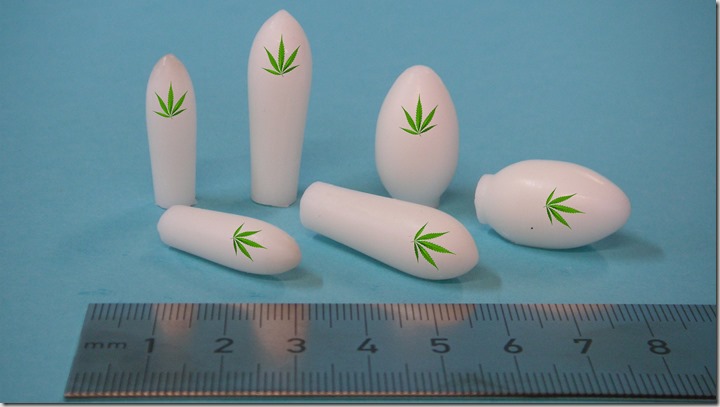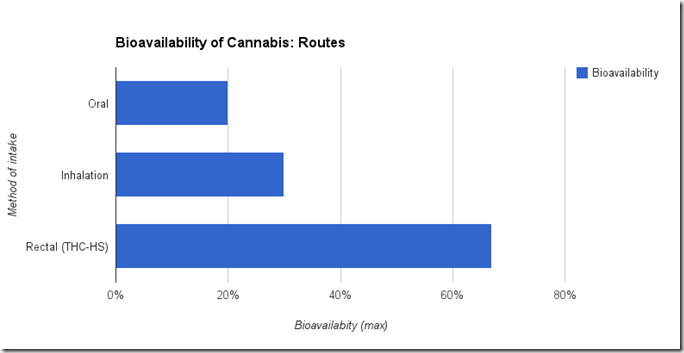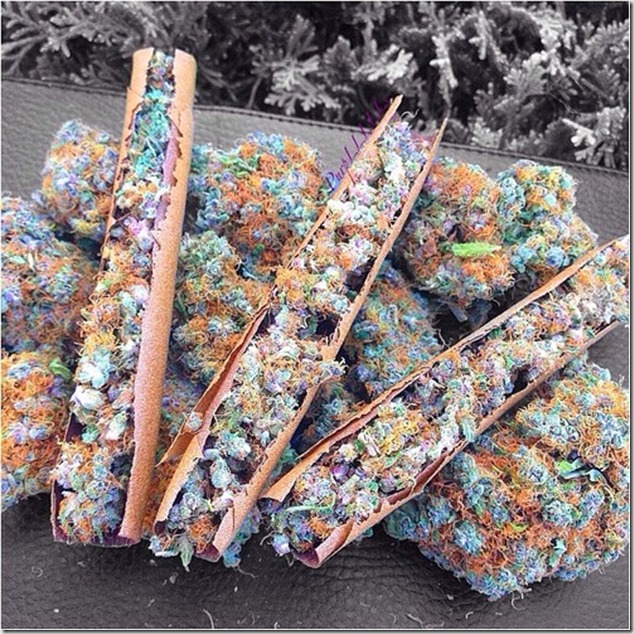by Owen Smith
A little known method of application, but one with a number of benefits, is the suppository. I recently interviewed V-CBC dispensary staff member Nicholas Fraleigh on Time4Hemp radio (listen here) to talk about the introduction of the cannabis suppository to their medicinal product line. I have written previously about Pulmonary, Oral and Topical routes of administration: considering the many medical conditions that medicinal cannabis users are seeking to treat, a particular route, (or combination) may be more appropriate.
Suppositories are particularly helpful for people with gastro-intestinal difficulties, an impaired jaw or throat or whose nausea and vomiting prevent effective oral application. This route may also be suitable where restrictions on oral ingestion before and after surgery apply. But it needn’t be an option of last resort. Due to the large surface area available for absorption, rectal administration provides the most effective way for your body to take in the medicinal compounds.
(image: Cannabis Digest)
Inhalation is the least efficient method offering 10 – 25% bioavailability; Oral around 20%; In a study involving THC-HS*, Rectal application delivered around 50% – 70% efficiency with more predictable effects between different individuals. Suppositories avoid the gastro-intestinal system where metabolites separate and break down the constituent compounds. One of these metabolites is 11-Hydroxy-Δ9-THC, which is a psychoactive compound similar to Δ9-THC.
Oral doses can take up to 2 hours before their medicinal effects are noticed by the patient. There is the potential that your previous meal will effect the rate at which the medicine will take effect. Most people begin to notice initial effects of a suppository within the first 10 – 15 minutes after insertion. Impedances to absorption could include dehydration; the presence of fecal matter and cysts or tumours inside the rectal wall. While this may slow or prevent the compounds entering the bloodstream, the application of cannabinoids directly to those sites of concern may help to activate local endocannabinoid receptors.
Similarly to edible cannabis, the effects of a suppository are long lasting, often ranging between 4-8 hours depending on the individual’s physiology and tolerance to cannabis. The V-CBC provides three different strengths to suit their many members needs: a low strength dose for general maintenance; a high strength dose for breakthrough pain and a low psycho-activity dose made with 1:1 CBD cultivars. Nick has written an article outlining in detailed instructions how to insert a cannabis suppository, which is not as scary as you may think.
(image: WikiHow)
Suppositories are quick and easy to make. Utilizing the techniques outlined in previous articles, one can perform an infusion of cannabis in Coconut butter before mixing and portioning the infused Cocoa butter into small rounded shapes (see above image). These can be individually weighed to help ensure consistent doses; then wrapped in wax paper, bagged, labelled appropriately and refrigerated out of the reach of children and pets.
Ingredients:
Organic cocoa butter
Organic coconut butter infused with the inflorescences (flowers) of different cultivars of cannabis including CBD+.
(Article first appeared at Lift)
*Delta9 THC-HS (hemisuccinate) is not exactly the same as Delta9 THC. It has undergone chemical stabilization through processing aids such as polyethylene glycol (PEG)-400 and vitamin E succinate (VES)to reduce degradation during hot-melt production at lower temperatures. (source)







